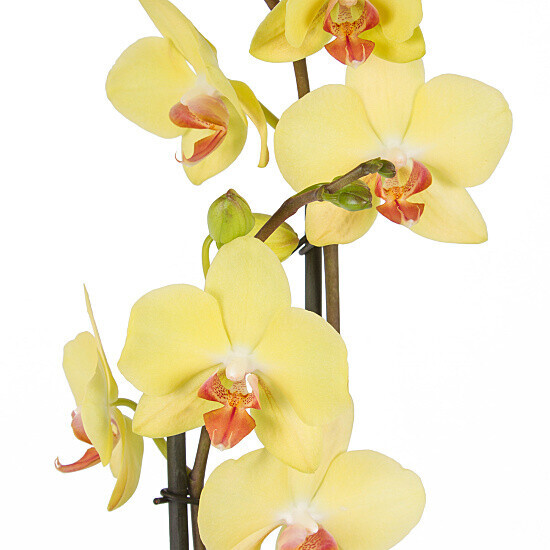
Are you a big fan of beautiful orchids? Who can blame you? In fact, they’re one of the most popular house plants in the UK – because, let’s face it, they look wonderful no matter where you place them.
But if you don’t have the time to go to your local garden centre to pick up the orchid of your dreams and are looking to buy it online, here, you’ll find everything you need to know – from getting your flowers by post, to looking after them when they arrive.
1. Always read the details
On most, if not all websites there will be a small information area where you can find out the type of orchid you’re purchasing along with any feeding details.
It’s important that you take a good, long read of this so that you know exactly how to look after your bloom when it arrives on your front door step.
2. Does the orchid come with a quality policy?
Now, not all companies will provide a quality policy, but you should keep your eye out for one just in case your orchid comes to you damaged.
While this is pretty unlikely, it always pays to be safe!
3. Always buy from a well-known company
This goes with all things you purchase online; never use a company you or your friends have never heard of, just to be on the safe side. If you use a business you’ve bought from before or someone you know has, you can be sure you’ll get a quality plant for a good price.
4. Choose a realistic delivery date
When you’re buying orchids online, it’s important that you book a delivery date when you know you’ll be available to receive it. You don’t want your plant left with your neighbour or at your local post office, in case it becomes damaged – and damaged orchids are difficult to revive; trust us!
5. Unpack your orchid
The last thing for you to remember is that when you order orchids online, you should always unpack them immediately after you’ve received them to ensure they are watered enough and receive a sufficient amount of sunlight.
Caring for your orchid
Now that you know everything there is to keep in mind about ordering orchids online, it’s time for you to get to grips with how best to care for them.
Here are four of the most common questions orchid-owners ask florists about caring for their bloom:
1. My orchid grows well but doesn’t bloom – why is this?
Many orchids that don’t bloom are in a resting state – if you find your orchid isn’t blooming but it isn’t resting either you may find that temperature could be the culprit. If the temperature is too hot in your home you could find that this prevents your orchid from blooming.
Also, if you have your orchid close to artificial light from lamps or spot lights you may find that this is preventing it from flowering.
However, if none of the above seems to be the problem, your orchid may simply not be receiving enough natural light. It’s recommended that orchids are kept in a window to ensure they get enough natural light to help them grow and flourish as best as they can.
2. My orchid keeps on blooming – when can I repot it?
If your orchid is in need of repotting but is still blooming you should definitely repot it. If it’s healthy looking then you can leave the spike on and if not, just remove the spike. Simple!
3. The buds on the spike open at weird angles which make the arrangement look strange – what can I do?
Once the buds of your orchid begin to form on the spike it’s important to refrain from repositioning the plant – like most, buds are drawn towards the light and if you frequently move the plant, the buds will twist and turn to find the light source. This will therefore be the reason for your arrangement looking a little “odd”.
4. I’m getting a lot of crown rot – what can I do?
Prevention is most definitely the best solution for dealing with frequent crown rot developing in your orchid. Crown rot tends to appear when water is deposited on the top of the plant – or on the crown. In order to prevent this from occurring it’s important that you water underneath the leaves and not above them.
It also helps to water your orchid before noon so that any splashed water is evaporated by night time – further preventing crown rot from rearing its ugly head.